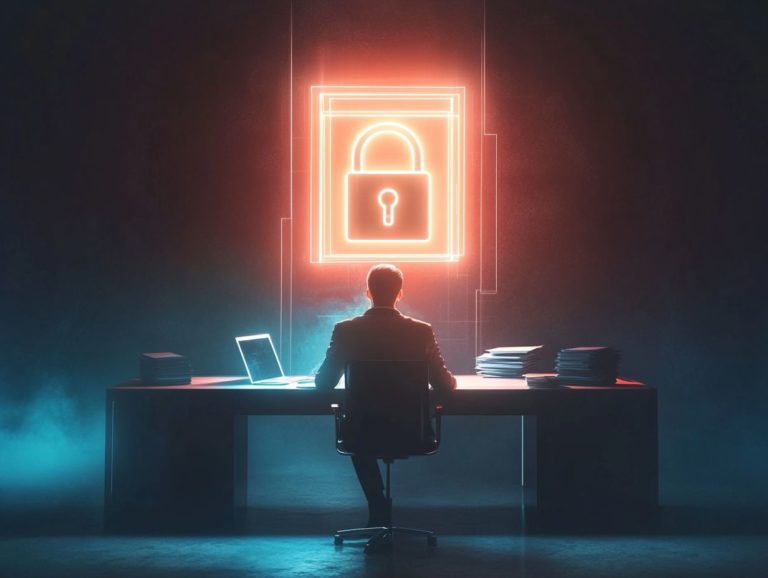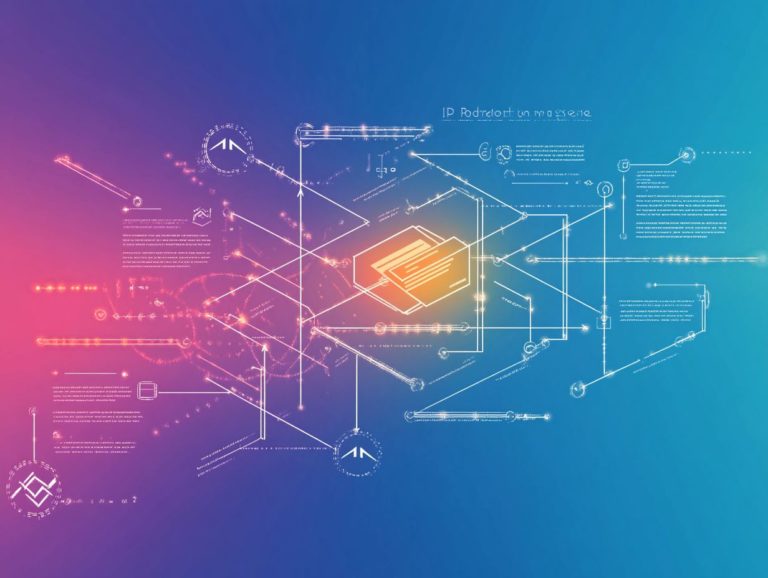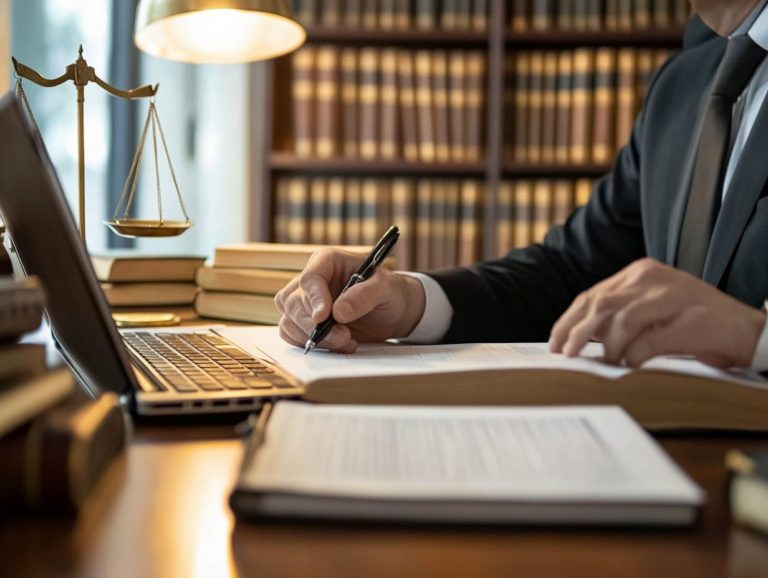What Is the Difference Between IP and Copyright?
Intellectual property (IP) stands as a cornerstone in today s vibrant landscape of creativity and innovation, safeguarding the rights of creators and inventors like you.
This article illuminates the various forms of IP, with a particular emphasis on copyright its definition, scope, and the complex legal details that accompany it.
You ll discover the essential distinctions between IP and copyright, including the mechanisms for their protection and enforcement.
Get practical steps now to protect your creations! Explore the avenues available for addressing any infringement you might encounter.
Dive in now to learn how to defend what is yours!
Contents
- Key Takeaways:
- Understanding Intellectual Property (IP)
- Understanding Copyright
- Key Differences Between IP and Copyright
- Similarities Between IP and Copyright
- How to Protect Your Intellectual Property and Copyright
- Frequently Asked Questions
- Curious About the Difference Between IP and Copyright?
- What Types of Creations Are Protected by IP?
- What Types of Works Are Protected by Copyright?
- Do Intellectual Property and Copyright Have Different Legal Protections?
- What is the Duration of Protection for Intellectual Property and Copyright?
- Can Someone Hold Both Intellectual Property and Copyright Protection for the Same Creation?
Key Takeaways:
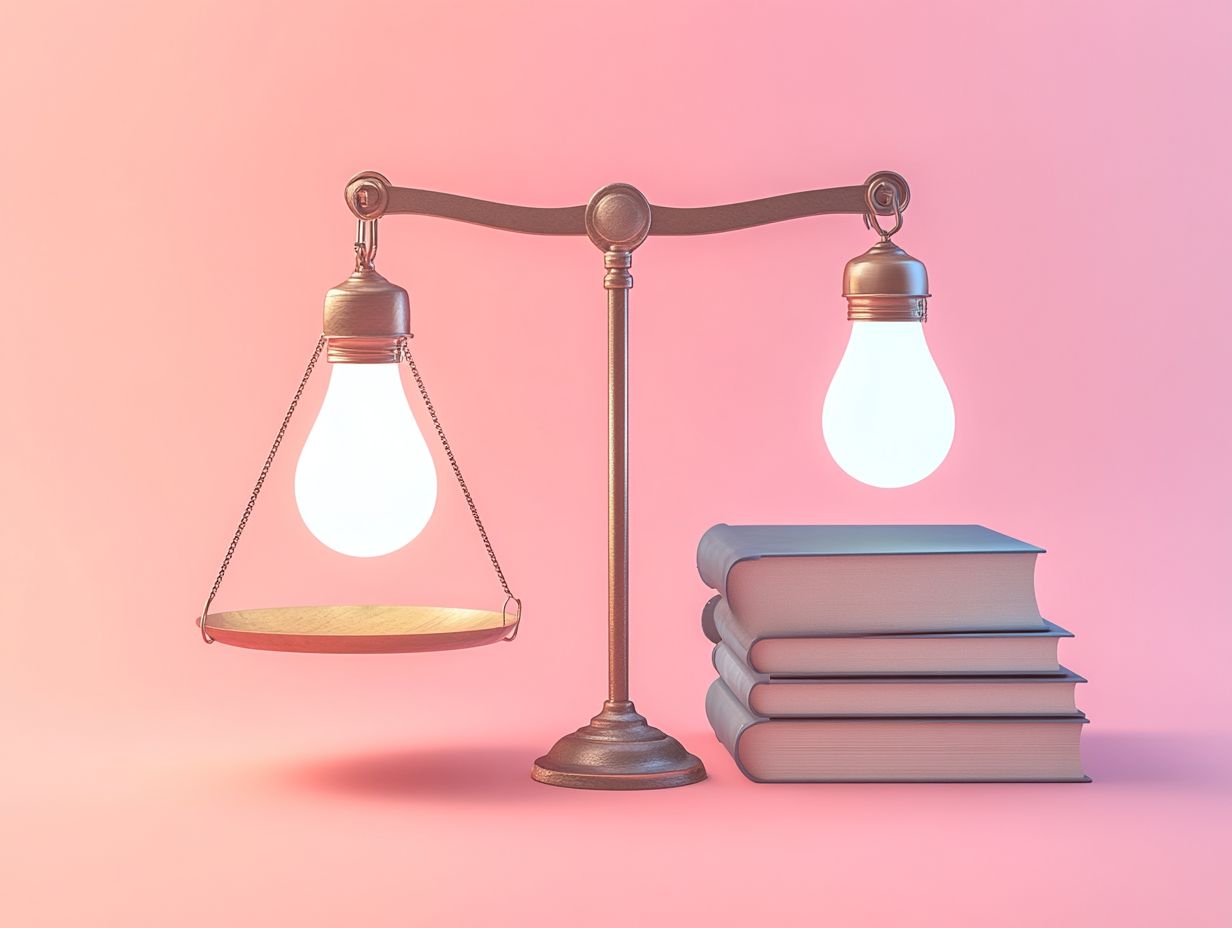
IP and copyright are both forms of legal protection for creative works. IP covers a broader range of intangible assets, while copyright specifically protects original literary and artistic works.
The duration of protection for IP and copyright differs, with IP lasting longer and copyright typically having a shorter duration.
Both IP and copyright require proactive steps to protect and enforce, such as obtaining legal protection and taking action against infringement.
Understanding Intellectual Property (IP)
Understanding Intellectual Property (IP) is vital for you as a creator, business owner, or individual looking to protect your intangible assets and assert your rights over your original works.
IP encompasses a range of legal rights, including copyright, patents, and trade secrets, all designed to safeguard the unique creative expressions and inventions that carry significant value in today s economy.
Mastering IP law helps you navigate the registration process confidently, enforce your rights, and prevent unauthorized use of your creative outputs in a competitive landscape.
Definition and Types of IP
Intellectual Property (IP) encompasses the legal rights bestowed upon individuals or organizations for their creative works and inventions, allowing you to retain control over how your intellectual outputs are utilized.
This protection is not merely a formality; it actively fosters innovation and encourages the cultivation of original ideas by establishing a framework that rightly acknowledges creators for their contributions.
The primary types of IP you should be aware of include:
- Copyright, which safeguards artistic creations such as novels, music, and films.
- Patents, which protect inventions and processes for a designated timeframe.
- Trade secrets, which are confidential business information that gives you an edge over competitors.
Each category serves a unique purpose: copyrights prevent unauthorized reproduction, patents grant exclusive rights to inventors, and trade secrets safeguard the confidentiality essential for effective business strategies.
Collectively, these forms of protection preserve the commercial value of creative endeavors while nurturing a vibrant culture of innovation.
Understanding Copyright
Copyright serves as a vital form of intellectual property, granting you exclusive rights to your original creations be it artistic works, literature, music, or software.
This legal protection ensures that your unique expression remains safeguarded from any unauthorized use, allowing you to maintain control over your creative endeavors.
Definition and Scope of Copyright
Copyright encompasses the legal protections granted to original works of authorship, from literature and music to films and software development. This legal framework gives you the power to control how your creations are used and distributed, ultimately nurturing an environment where artistic expression can flourish.
Works qualifying for copyright protection include both published and unpublished creations, provided they demonstrate a degree of originality. Some works may exist in the public domain, meaning they re available for anyone to use without requiring permission.
Grasping the intricacies of copyright is essential for safeguarding your rights while also maintaining a balance with public access to creative materials.
Key Differences Between IP and Copyright
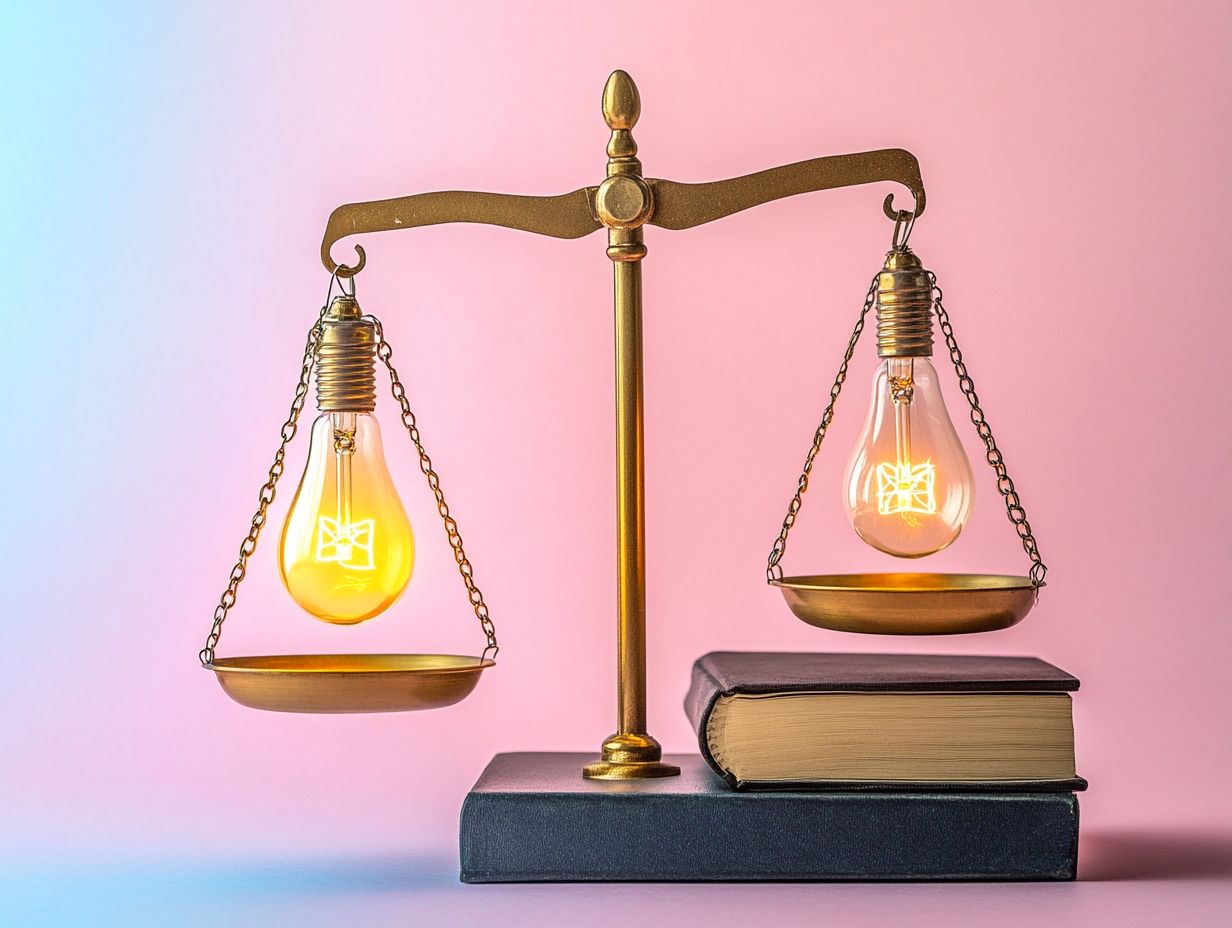
Understanding copyright and IP can empower your creative journey! Intellectual property (IP) encompasses a wide range of legal rights that safeguard your creative works and inventions. Copyright is different from other forms of IP, as it specifically protects original works of authorship.
This distinction ensures that your unique creations receive the recognition and protection they deserve.
Legal Protection and Ownership
Legal protection for copyright grants you exclusive rights over your works, allowing you to control how they are used, distributed, and reproduced.
This law protects your creative work and ensures you can monetize your efforts effectively. It gives you the power to take action against unauthorized use or plagiarism, reinforcing your ownership rights.
Infringement can lead to significant consequences, including financial penalties and legal disputes.
Understanding these protections helps you navigate the complexities of the digital landscape and maintain the value of your intellectual property. Ultimately, respecting copyright is crucial for fostering creativity and innovation in society.
Duration of Protection
The duration of copyright protection varies by jurisdictions, typically lasting for the life of the author plus a set number of years, extending the rights you hold over your original works.
In the United States, for example, copyright lasts for your life plus 70 years. Canada has recently aligned with this standard, also providing a 70-year duration. However, these timeframes can be quite different for works created as part of a job or anonymous pieces, leading to a complex landscape for you as a creator navigating your rights.
This variability can significantly impact your economic rights, shaping your options for licensing and distribution. In regions with shorter terms, your works may enter the public domain the state where works are free for everyone to use more quickly, which could potentially reduce your income from licensing agreements.
Understanding these nuances is crucial for you to safeguard your interests and strategize effectively in your creative endeavors.
Types of Work Protected
Copyright protection encompasses a wide range of creative works, including artistic endeavors, literature, music, films, and software, ensuring your original creations are shielded from unauthorized use.
This legal framework grants you exclusive rights to reproduce, distribute, and display your works while fostering innovation by providing essential financial incentives.
For instance, as a musician, you can protect your original compositions from being copied or exploited without your consent. Similarly, as an author, you have the power to prevent unauthorized adaptations of your novels into films.
Software developers, too, enjoy these copyright benefits, safeguarding their code to ensure their ingenious creations remain untarnished by piracy.
These protections let you maintain control over your contributions, allowing you to earn recognition and revenue for your hard work.
Similarities Between IP and Copyright
Intellectual property (IP) and copyright both serve a vital purpose: they protect the rights of creators and authors, ensuring that their original works receive the legal recognition and safeguards they rightfully deserve.
Purpose of Protection
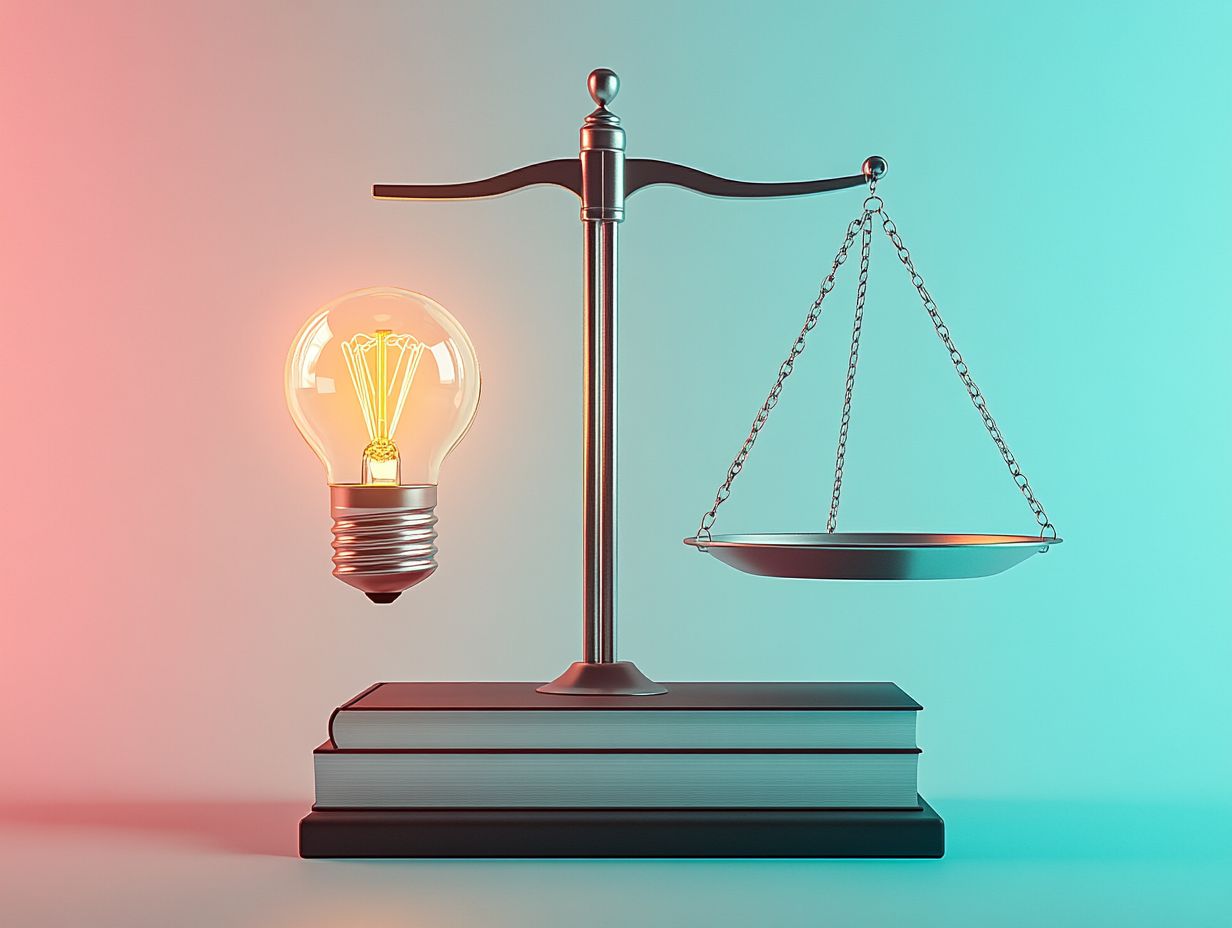
The primary purpose of both intellectual property and copyright protection is to empower you as a creator by granting exclusive rights to your works. This not only enhances the commercial value of what you produce but also paves the way for economic gain.
These protections are essential tools that encourage your innovation and artistic expression, ensuring you can reap the rewards of your hard work. By safeguarding your original ideas, music, literature, and inventions, these protections foster a vibrant cultural landscape while stimulating economic growth through increased investment across various industries.
If you don’t protect your work, you could lose your rights, so act now! When you feel secure in your ownership, you re more inclined to take risks and develop new concepts, ultimately benefiting society as a whole. Thus, the significance of these legal frameworks reaches far beyond individual gain; they contribute to a thriving economy that truly values creativity and originality.
Infringement and Enforcement
Copyright infringement occurs when you use a protected work without the necessary authorization. This can lead to legal actions and civil lawsuits aimed at enforcing the rights granted to the creator.
This unlawful use can take many forms, including unauthorized copying, distribution, or public display of copyrighted material.
Creators have several legal mechanisms to enforce their rights. They can send cease and desist letters to formally request that you stop the unauthorized use. They may also pursue injunctions and damages in court.
Creators risk losing revenue and value in their work if infringement occurs. On the flip side, those who infringe may face hefty fines, statutory damages, and even criminal charges, highlighting the complexity of respecting intellectual property rights.
How to Protect Your Intellectual Property and Copyright
Protecting your intellectual property and copyright requires a thoughtful approach. This involves several essential steps.
- Familiarize yourself with the registration process to ensure that your creative works are formally recognized.
- Implement robust legal protections tailored to your specific needs.
- Explore various enforcement options to safeguard your valuable creations from potential infringement.
Steps to Take for Legal Protection
To secure legal protection for your intellectual property, follow specific steps. Start by conducting thorough research and completing the registration process with the right organizations.
- Identify the type of intellectual property you possess whether it’s a trademark, copyright, or patent to tailor your approach to your unique needs.
- Conduct a comprehensive search for existing claims to avoid unintentional infringement.
- Prepare and file your applications with relevant organizations, such as the U.S. Copyright Office or the Trademark Office.
- This registration not only formalizes your ownership but also strengthens your ability to enforce your rights against unauthorized use.
- Maintain vigilant oversight over your intellectual property to ensure long-term protection and peace of mind.
Enforcement Options for Infringement
If infringement occurs, you have several enforcement options. These include sending cease-and-desist letters, engaging in negotiations, or initiating civil lawsuits to assert your legal rights.
These strategies resolve disputes and protect your intellectual property. For instance, a cease-and-desist letter serves as a formal warning to infringers, often leading to amicable agreements without prolonged legal battles.
When negotiations don t yield the desired results, having detailed documentation of your rights is critical in civil lawsuits. This documentation clearly establishes ownership and outlines the extent of the infringement.
Ultimately, employing these enforcement strategies gives you the power to maintain the integrity and value of your work. This contributes to a more vibrant and respectful creative landscape.
Frequently Asked Questions
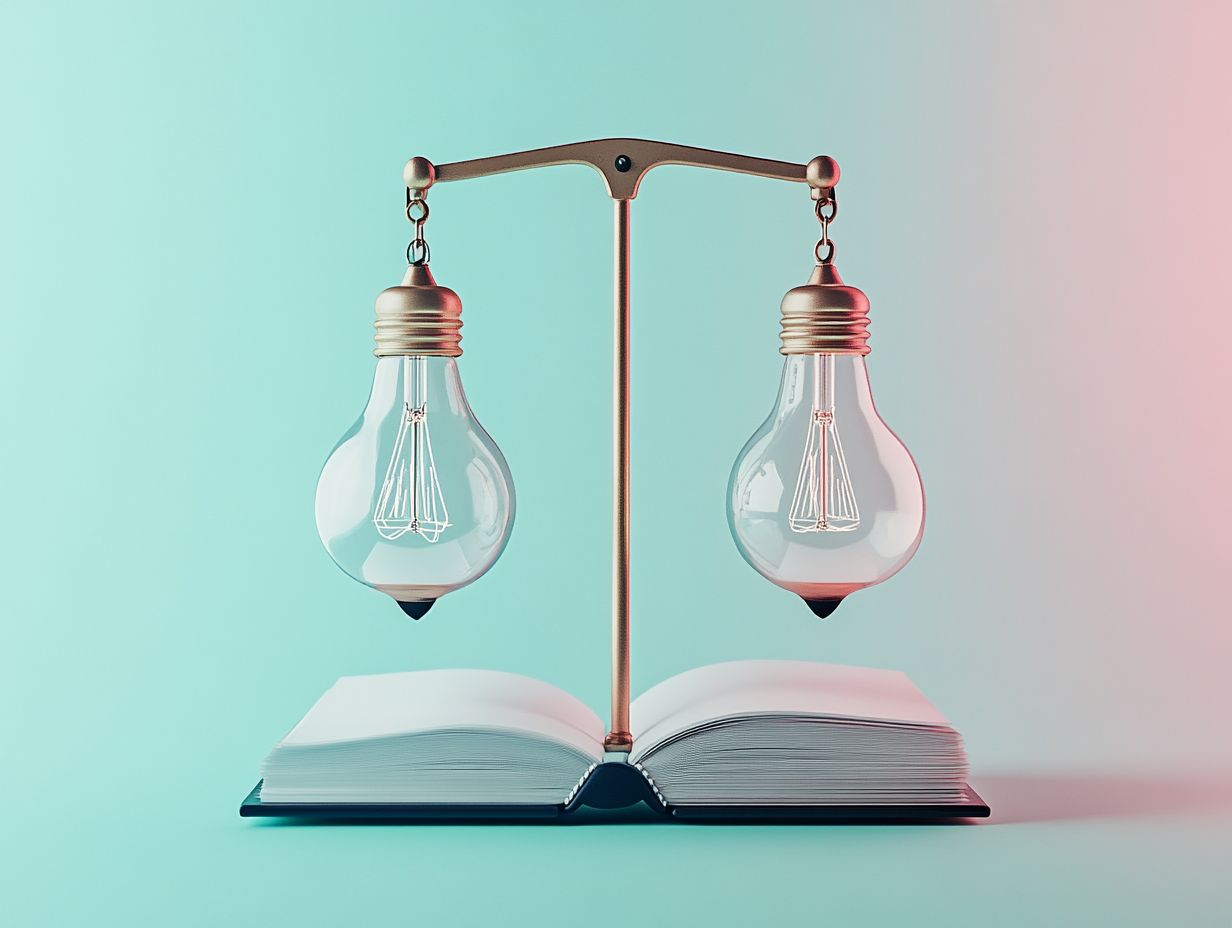
Curious About the Difference Between IP and Copyright?
Intellectual property (IP) and copyright are two legal concepts that protect different types of creations. IP is a broad term that encompasses various types of intangible assets, while copyright specifically refers to the protection of literary and artistic works.
What Types of Creations Are Protected by IP?
IP protects a wide range of creations, including inventions, designs, symbols, names, and trade secrets. This includes anything from a new technology to a unique brand logo or a secret recipe.
What Types of Works Are Protected by Copyright?
Copyright specifically protects original literary and artistic works, including books, movies, music, and visual art. It also includes derivative works, such as adaptations or translations of existing works.
Take action today to safeguard your creations!
Do Intellectual Property and Copyright Have Different Legal Protections?
Yes, intellectual property (IP) and copyright have different legal protections.
Intellectual property is mainly protected through patents (legal rights for inventions), trademarks (symbols or logos that distinguish brands), and trade secrets (confidential business information).
What is the Duration of Protection for Intellectual Property and Copyright?
The duration of protection varies.
Intellectual property protections can last from 20 years to indefinitely, depending on the type and the country. Copyright typically lasts for the life of the author plus an additional 70 years after their death.
Can Someone Hold Both Intellectual Property and Copyright Protection for the Same Creation?
Yes, a single creation can receive both protections.
For instance, a new invention could be patented for its unique technology and copyrighted for its instruction manual. This dual protection maximizes the creator’s rights and potential earnings!


